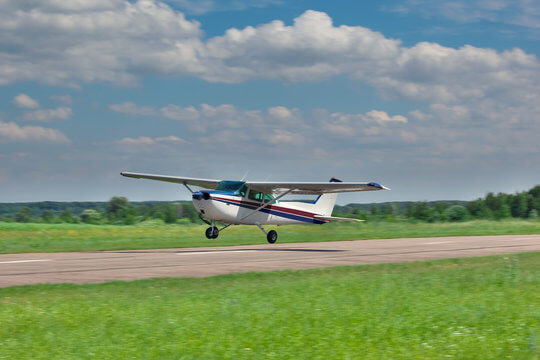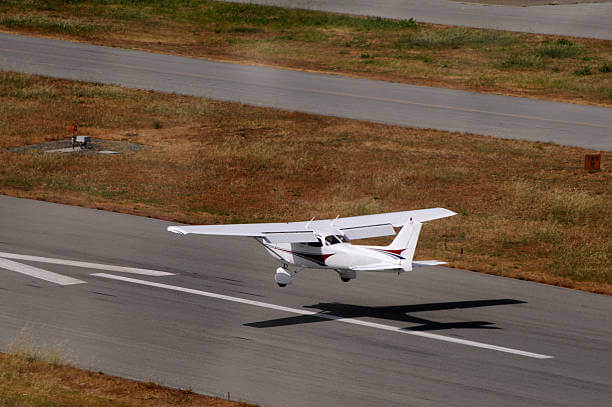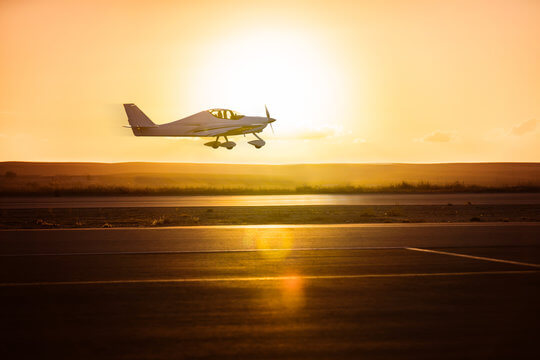Navigating the delicate dance of landing an aircraft encompasses a symphony of factors blending science, technique, and artistry. In the aviation realm, where precision is paramount, achieving a flawless touchdown isn’t just about following autopilot protocols but rather about harmonizing calculated maneuvers with instinctual finesse. Delving into the intricacies, E3 Aviation underscores the pivotal role of consistency in approach and execution, emphasizing the need for personal checklists and a stabilized mindset. From mastering circuit patterns to finesse-filled round-outs and flares, every phase demands meticulous attention, situational awareness, and a keen ability to adapt to the unexpected. E3 Aviation’s holistic approach not only cultivates technical prowess but also nurtures the intuitive flair that distinguishes competent pilots, ultimately ensuring safe and seamless landings across diverse aviation landscapes.
Mastering the Art of Landing For Pilots
JOIN TODAY! | MEMBER LOGIN
Landing an aircraft is one of the most critical phases of flight, and it allows everyone on the ground and in the air to assess a pilot’s abilities. Whether you grease the landing smoothly or bounce down the runway, that moment often defines the entire flight in the minds of observers. Yet, with modern aircraft capable of auto-land functions, one might wonder how challenging it can be to land an aircraft. The truth is, a good landing requires a harmonious blend of science, technique, and artistry – universal principles that apply to most aircraft categories, albeit with slight variations.
The Science Behind Landing An Aircraft
The science behind a successful landing revolves around consistency. Autoland systems excel at this by meticulously following a predetermined set of rules, ensuring proper aircraft configuration, power settings, trim settings, and positioning for every landing. As pilots, we often complicate the process by deviating from a consistent approach. E3 Aviation emphasizes the importance of establishing a personal checklist and adhering to it religiously, as this lays the foundation for a stabilized approach and landing.

Aircraft Circuit Patterns
Consistency begins with proper planning and execution of the circuit pattern. Allocate sufficient time to adjust power settings, trim the aircraft, and complete necessary checks without rushing. Neglecting trim can lead to discomfort, especially when transitioning to larger aircraft. Familiarize yourself with the 1.3 x Vso (approach speed) for your aircraft, as maintaining this speed on short final is crucial for a smooth touchdown. Deviations may be necessary in gusty conditions, but the goal should be gradual changes and a stable approach.
Technique plays a pivotal role once you’ve established a stabilized approach. On final, use small power adjustments to maintain a constant aiming point on the windscreen, preventing undershoots or overshoots. As you transition to short final, shift your focus outside the cockpit, enhancing your spatial awareness and alignment with the runway. Use power for height adjustments and the elevator for speed control.

Aircraft Round Out and Flare Maneuvers
The round out and flare maneuvers demand finesse. Initiate the round out by raising the nose to a level attitude 8-12 feet above the runway while closing the throttle. Then, smoothly increase the back pressure to flare, presenting the aircraft’s nose high for a main-gear touchdown. Avoid abrupt movements unless dealing with challenging wind conditions or tailwheel aircraft. If the flare is too high, apply a touch of power to fly through the extended float. If too low, increase the back pressure smoothly.
The Importance of Situational Awareness
Situational awareness is paramount throughout the landing phase. Distractions in the cockpit, such as conversations or non-essential tasks, can severely degrade a pilot’s ability to maintain focus and make timely corrections. E3 Aviation emphasizes the importance of a sterile cockpit environment during critical phases of flight, including approaches and landings.
Automatic Terminal Information Service (ATIS)
Additionally, a comprehensive understanding of the Automatic Terminal Information Service (ATIS) is essential. This information provides vital details about wind conditions, runway in use, and any relevant advisories that could impact the landing. Pilots must actively listen to and interpret the ATIS data, incorporating it into their approach and landing strategy.
While the science and technique form the backbone of a good landing, the art lies in adapting to non-ideal conditions. Crosswinds, low ceilings, or ATC instructions that disrupt the standard approach require pilots to rely on their intuition and familiarity with the aircraft. This “seat of the pants” knowledge comes from extensive experience in various situations, allowing pilots to make subtle adjustments and corrections without conscious effort.

The Importance of Having Experienced Aviation Instructors
E3 Aviation encourages its students to seek opportunities to fly in varying conditions, under the guidance of experienced instructors. Practicing approaches and landings in crosswinds or during marginal weather builds confidence and refines the artistry required for exceptional landings. Additionally, aerobatic training can help pilots develop a deeper understanding of the aircraft’s behavior at unusual attitudes, enhancing their ability to recover from potential deviations during the landing phase.
In essence, mastering the art of landing an aircraft requires a harmonious blend of science, technique, and artistry, underpinned by continuous practice, situational awareness, and a commitment to adhering to consistent procedures. At E3 Aviation, we prioritize these principles, equipping our students with the knowledge and skills necessary to execute smooth, safe landings in various aircraft categories and conditions.
As an E3 Aviation member, you get access to TONS of informative aviation articles and content. Sign Up or Log In today and enjoy all of the tools, resources, product discounts, community and entertainment that E3 Aviation Association offers.

